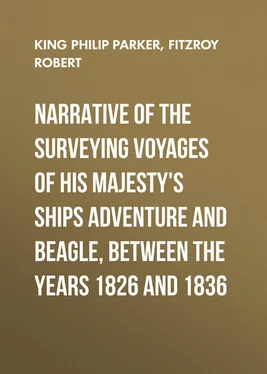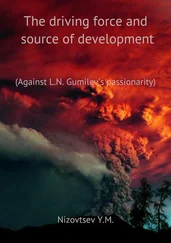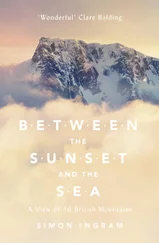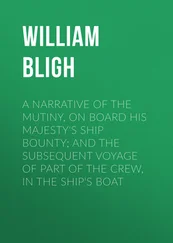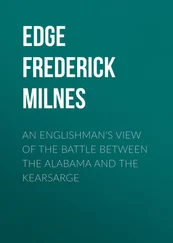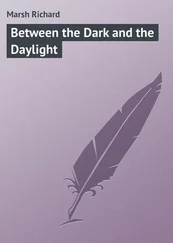Robert Fitzroy - Narrative of the surveying voyages of His Majesty's ships Adventure and Beagle, between the years 1826 and 1836
Здесь есть возможность читать онлайн «Robert Fitzroy - Narrative of the surveying voyages of His Majesty's ships Adventure and Beagle, between the years 1826 and 1836» — ознакомительный отрывок электронной книги совершенно бесплатно, а после прочтения отрывка купить полную версию. В некоторых случаях можно слушать аудио, скачать через торрент в формате fb2 и присутствует краткое содержание. Издательство: Иностранный паблик, Жанр: foreign_antique, foreign_prose, на английском языке. Описание произведения, (предисловие) а так же отзывы посетителей доступны на портале библиотеки ЛибКат.
- Название:Narrative of the surveying voyages of His Majesty's ships Adventure and Beagle, between the years 1826 and 1836
- Автор:
- Издательство:Иностранный паблик
- Жанр:
- Год:неизвестен
- ISBN:нет данных
- Рейтинг книги:3 / 5. Голосов: 1
-
Избранное:Добавить в избранное
- Отзывы:
-
Ваша оценка:
- 60
- 1
- 2
- 3
- 4
- 5
Narrative of the surveying voyages of His Majesty's ships Adventure and Beagle, between the years 1826 and 1836: краткое содержание, описание и аннотация
Предлагаем к чтению аннотацию, описание, краткое содержание или предисловие (зависит от того, что написал сам автор книги «Narrative of the surveying voyages of His Majesty's ships Adventure and Beagle, between the years 1826 and 1836»). Если вы не нашли необходимую информацию о книге — напишите в комментариях, мы постараемся отыскать её.
Narrative of the surveying voyages of His Majesty's ships Adventure and Beagle, between the years 1826 and 1836 — читать онлайн ознакомительный отрывок
Ниже представлен текст книги, разбитый по страницам. Система сохранения места последней прочитанной страницы, позволяет с удобством читать онлайн бесплатно книгу «Narrative of the surveying voyages of His Majesty's ships Adventure and Beagle, between the years 1826 and 1836», без необходимости каждый раз заново искать на чём Вы остановились. Поставьте закладку, и сможете в любой момент перейти на страницу, на которой закончили чтение.
Интервал:
Закладка:
Our stay at this port was prolonged beyond my intention by thick snowy weather and hard gales, which cut off our communication with the shore; for notwithstanding we were in so sheltered a place, and the vessel had three anchors down, we did not consider her quite secure against the violent squalls. We had been fortunate in procuring observations, and took advantage of our detention to lay down the operations of the preceding days on paper. Muscles were found in great abundance on the mud flats. There are three varieties, one of which has a bitter, disagreeable taste, but the others are exceedingly good and wholesome. One of the latter is of large size ( Mytilus Magellanicus of the Ency. Méth.) The other is of a more globose form than the bitter sort, and has a very obtuse hinge and margin. The bitter kind contains pearls, which are valueless, because small, and of a bad colour.
At first there were plenty of sea-birds 103 103 Here we obtained a second species of the Steamer-duck, which is described in the Proceedings of the Zoological Society of London, as ' Micropterus Patachonicus , Nob.' It differs from the M. brachypterus not only in colour but in size, being a smaller bird, and having the power of raising its body, in flight, out of the water. We called it the 'Flying Steamer.'
in the cove, which took refuge at the head of the bay; till after two days, they deserted us altogether. There appeared to be an abundance of fish; but as we had not provided ourselves with a seine, and they would not take bait, we were confined for refreshments principally to shell-fish.
No traces of quadrupeds, excepting an Indian dog, were noticed. Here Wallis's people saw a large cloven-footed animal, which they described to be as "big as a jack-ass." It was probably a deer, one or two of which had occasionally appeared at Port Famine.( 104 104 Or the animal called by Molina 'Huemul.' – R. F.
)
It has been mentioned that we found many humming-birds at Port San Antonio, which we attributed to the sheltered situation of the place, and the luxuriant growth of fuchsias and other plants, upon the sweets of whose flowers they feed. Here, however, one of the same species was seen sporting about in a most exposed place and during the falling of a snow shower, a proof of the hardy character of this little bird, which, if it does migrate upon the approach of winter to a warmer clime, lingers, at least, as long as it possibly can. This was the middle of April, the winter had, in fact, already commenced, and all the mountains around us were clothed with snow, while the ground was also coated with the same dazzling covering. Mr. Graves intended to ascend the Mountain de la Cruz; but a heavy fall of snow prevented the attempt, and we lost the opportunity of obtaining a round of angles from that elevation, which would have materially assisted our operations. We should also have obtained a bird's-eye view of the Barbara Channel and the Sounds on the opposite side of the Strait, whose extent and nature we did not know; for Cordova's notice of San Simon's Bay, and a deep inlet which exists to the westward of it, is very unsatisfactory.
There were no signs of a recent visit from the Fuegians, though at the entrance of the cove we found three or four wigwams in good repair; whence it seems probable, that the place is one of their frequent haunts. When the Beagle came here last year, some station staves were left standing; but, before her return, every one had been removed; and when Captain Stokes went down the Barbara Channel, to the relief of the Saxe Cobourg's crew, those staves were seen in the possession of the Indians.
A fine morning (11th) induced us to leave this quiet anchorage, to examine the openings of the south shore; and in the afternoon, the anchor was dropped in a convenient place, on the west side of the western inlet, named by us Warrington Cove. While crossing the bay from Point Elvira, the north extremity of Cayetano Island, several 'smokes' were observed on the low land, at the bottom of the inlet; and after we anchored two canoes visited us, containing six men, four women, and two or three children. They approached very cautiously, and could not be induced to come alongside. At last the men landed, and invited us to communicate with them. I therefore went on shore with two or three officers, and remained with them half an hour, during which they gradually lost the distrust they had at first evinced; but each man still carried a number of pebbles in the corner of his wrapper, ready to repel any attack we might make upon them; from the knowledge we have since obtained of their character, I think it probable that they had lately committed some act of aggression on a sealing-vessel, and were afraid of retaliation. Our conduct tended to assure them of our friendship; and, shortly after we left the shore, they came alongside in their canoes, and were very familiar, eagerly bartering their necklaces and baskets. In their way to us they had probably landed their more valuable goods, such as otter and seal-skins, as well as their weapons and dogs, without which they never go far.
The natives of this part are considered by the sealers to be the most mischievously inclined of any in the Strait, or Tierra del Fuego. The appearance of our visitors was certainly against them; but they did not commit themselves during our two or three days' communication, by any act which could make us complain, or cause suspicion of their honesty and friendship. We, however, kept too good a look-out, to enable them to take advantage of our seeming good-nature.
Among bushes behind the high beach were three wigwams, but the Indians had no intention of remaining with us for the night. They went away, to our great satisfaction, at an early hour, and returned to the bottom of the sound, where a large party of their countrymen was assembled. Their departure enabled us to look round, in the vicinity of our anchorage, and examine its productions, which differed in no way from those of other parts of the coast. Its geological structure is, however, different: the rocks are greenstone, or granite, without slate. Mount Maxwell, rising immediately over the cove, is the termination of a rocky mountain range, whose summits are crowned with snow. The verdant sides of the hill, interspersed at intervals with large masses of bare rock, produced, from a distance, rather a pleasing effect; but, upon examination, the verdure was found to consist principally of moss, or a stunted vegetation, covering a soft and swampy soil. The upper portions of the mount are so precipitous as not to be easily reached; and, indeed, many parts rise with a perpendicular ascent for more than a hundred feet. On the south side of Mount Maxwell is Smyth Inlet, which contains anchorage on the north shore, particularly one in Earle Cove; but in the centre the water is deep, and on that account, it is not an inviting place for a ship. During Mr. Graves's absence in Smyth Harbour, I examined the coast as far as Cape Edgeworth, where I obtained an extensive set of bearings. The afternoon was particularly favourable for the purpose, the snow-capped mountains of the north shore were perfectly distinct; and among them was a very high one, shaped like a Highland target, the peak of the mountain answering to the central spike of the shield. We never afterwards saw it, nor could I, on this occasion, fix its position better, than by estimating its distance. The rock is chiefly greenstone, accompanied by considerable masses of granite. A little islet, off Dighton Cove, is composed of granite, of a lamelliform structure. Mr. Graves brought me a specimen of lamelliform granite attached to a mass of greenstone.
The Indians visited us every day, their number being generally from twelve to sixteen, of which five or six only were men, the rest were women, and children of all ages. One of the latter could not have been more than three weeks old; yet the mother, apparently about sixteen years of age, was always occupied in the laborious employment of paddling the canoes. The child was secured in the mother's lap, with its head on her bosom, by a mantle, which was drawn tightly round both mother and child. Their canoes were similar to those of the eastern parts of the Strait, about ten feet long, holding four or five grown persons and two or three children, besides their dogs, implements, and weapons: they are formed of bark, and kept in shape by wooden cross supports secured to the gunwale, which is lined by a long, slender pole. They are divided into three compartments, the foremost occupying about one-third of the length, contains the spears, placed ready for immediate use; in the second are the grown persons, with the fire-place between them, the men sitting between the fire-place and the spears, to be ready to use them upon the approach of seals or porpoises; on the opposite side of the fire-place are seated the women who paddle the canoe, in which the men sometimes assist, when great expedition is necessary. Behind the women, in the third division, are the elder children and the dogs, the younger children being generally stowed away in the women's laps, for the sake of mutual warmth. The fire is made upon a layer of clay, several inches thick, at the bottom of the canoe; and above the fire, across the gunwales, are laid several pieces of half-burnt wood, for fuel.
Читать дальшеИнтервал:
Закладка:
Похожие книги на «Narrative of the surveying voyages of His Majesty's ships Adventure and Beagle, between the years 1826 and 1836»
Представляем Вашему вниманию похожие книги на «Narrative of the surveying voyages of His Majesty's ships Adventure and Beagle, between the years 1826 and 1836» списком для выбора. Мы отобрали схожую по названию и смыслу литературу в надежде предоставить читателям больше вариантов отыскать новые, интересные, ещё непрочитанные произведения.
Обсуждение, отзывы о книге «Narrative of the surveying voyages of His Majesty's ships Adventure and Beagle, between the years 1826 and 1836» и просто собственные мнения читателей. Оставьте ваши комментарии, напишите, что Вы думаете о произведении, его смысле или главных героях. Укажите что конкретно понравилось, а что нет, и почему Вы так считаете.
